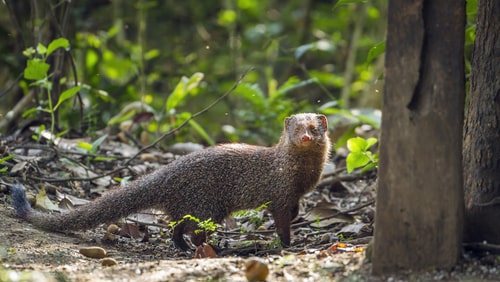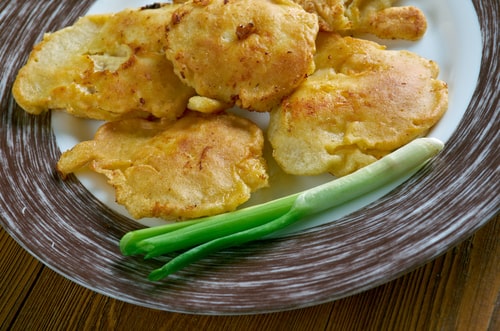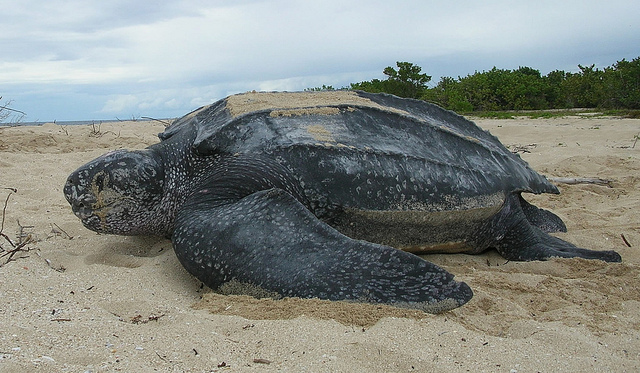Last updated on April 19th, 2022
51. Economy: Tourism, manufacturing, pharmaceuticals, and technology play a significant role in Puerto Rico’s economy.
52. Trade: The United States, the Dominican Republic, and the U.K are Puerto Rico’s main trading partners.
53. The best time to visit Puerto Rico is between December and April.
54. Castillo San Cristóbal is one of Puerto Rico’s most important landmarks.
55. Beaches: Puerto Rico is known for its beautiful beaches, which can be found all over the island.
56. Ponce, also known as La Perla del Sur (“Pearl of the South”), is the second-most-populous city in Puerto Rico.
57. Coffee lovers, pay attention: Puerto Rico is a coffee lovers’ paradise. Here, you can taste some of the best coffee in the world. With more than 10,000 coffee farms, there is no doubt Puerto Rico’s coffee is worth your attention!
58. Puerto Ricans are proud to say “I’m as Puerto Rican as a coquí.” See fact no. 17 and you’ll learn why.
Flag of Puerto Rico

Facts about wildlife in Puerto Rico, climate, size etc
59. Puerto Rico is the easternmost and smallest island of the Greater Antilles group.
60. If you are interested in seeing a major breeding ground for wildlife, head to the uninhabited Mona Island.
61. Rio de la Plata is the longest river on the island. It runs for 74 km from Cayey to Dorado and empties into the Atlantic.

62. Puerto Ricans imported mongoose from India for controlling the population of reptiles in cane fields.
63. In Puerto Rico, throughout the year, the temperature varies between 70 and 80 degrees Fahrenheit.
64. Bird, flower, tree: note Puerto Rico’s National Bird: Reina Mora; National Flower: Flor de Maga; National Tree: Ceiba.
About Puerto Rican culture
65. Puerto Rico has been the destination of choice for immigrants from various countries including Italy, France, Germany, Cuba, Lebanon, Scotland, Ireland, the Dominican Republic and more.
66. The immigration of residents from these different countries gives Puerto Rico a rich culture.
67. In Puerto Rico, standing close to a person during a conversation and kissing them on their cheeks is considered a sign of respect.
68. Grillwork is ubiquitous in Puerto Rican architecture because it offers security against criminal activity. Since the 1950s, high-rise condominiums have become desirable housing choices as opposed to individual housing and community housing, which prevailed in the country prior to the modern period.

69. Puerto Ricans prefer native food, although they enjoy fast food, as well.
70. Puerto Ricans prefer good family life and education over money. However, commodities such as cars, gadgets, and clothes differentiate people.
71. Note that Puerto Rico competes in the Olympics individually, and they have won six medals in the Olympic games as of the date of this writing. Athletes from the region participate in events including tennis, wrestling, volleyball, boxing, swimming, the triathlon and table tennis.
72. According to ifitweremyhome.com, if Puerto Rico were your home instead of the United States you would be 2.2 times more likely to be unemployed and would use 56% less electricity.
73. Moreover, if Puerto Rico were your home instead of France, you would be 22.1 times more likely to be murdered.
74. Puerto Rico is slightly less than three times the size of Rhode Island.
75. Cock-fighting is a legal and popular sport in Puerto Rico. In the majority of the towns in Puerto Rico, you can find stadiums built for rooster fights.

Common name Spanish: Tinglar. Image credit – U.S. Fish and Wildlife Service
76. Puerto Rico is also home to the largest living reptile in the world – the leatherback sea turtle. You can see these endangered reptiles on the islands of Vieques and Culebra.
77. In 2016, more than 80% of Puerto Rico’s population uses the internet.
Puerto Rico – the country at a glance
| Independence | none (territory of the US with commonwealth status) |
|---|---|
| National anthem | "La Borinquena" (The Puerto Rican) |
| Capital City | San Juan (18°27′N 66°6′W) |
| Largest City | San Juan (18°27′N 66°6′W) |
| Total area | total: 9,104 sq km land: 8,959 sq km water: 145 sq km |
| Literacy rate | 92.4% |
| Population | 3,098,423 (2022 est.) |
| Population growth rate | -1.59% (2020 est.) |
| Demonym | Puerto Rican (formal) Boricua (colloquial) |
| Suffrage | 18 years of age; universal; note - island residents are US citizens but do not vote in US presidential elections |
| Government type | presidential democracy; a self-governing commonwealth in political association with the US |
| President | Joe Biden (D) |
| Governor | Pedro Pierluisi (PNP/D) |
| Official Language | Spanish and English |
| National Anthem | "La Borinqueña" |
| Religion | Roman Catholicism |
| Borders | Land borders: 0 Km; Coastline: 501 Km |
| Currency | United States dollar ($) (USD) |
| Life expectancy at birth | 81.68 Years (2022) Life expectancy at birth indicates the number of years a newborn infant would live if prevailing patterns of mortality at the time of its birth were to stay the same throughout its life. |
| Climate | tropical marine, mild; little seasonal temperature variation |
| Terrain | mostly mountains with coastal plain in north; precipitous mountains to the sea on west coast; sandy beaches along most coastal areas |
| Mean elevation | 261 m |
| Lowest point | Caribbean Sea 0 m |
| Highest point | Cerro de Punta 1,338 m |
| Natural resources | some copper and nickel; potential for onshore and offshore oil |
| Agricultural land | 22% |
| Birth rate | 7.87 births/1,000 population (2022 est.) |
| Death rate | 9.76 deaths/1,000 population (2022 est.) |
| Sex ratio | 0.89 male(s)/female (2022 est.) |
| National symbol | `Puerto Rican spindalis (bird), coqui (frog) |
| National colors | red, white, blue |
| Industries | pharmaceuticals, electronics, apparel, food products, tourism |
| Exports | $73.17 billion (2017 est.) chemicals, electronics, apparel, canned tuna, rum, beverage concentrates, medical equipment |
| Imports | $49.01 billion (2017 est.) chemicals, machinery and equipment, clothing, food, fish, petroleum products |
| GDP - per capita (PPP) | $33,400 note: data are in 2017 dollars (2020 est.) |
| Time Zone | Atlantic (UTC-4) |
| Internet country code | .pr |
| Calling Code | +1-787, +1-939 |
| Drives on the | Right |
| Table last updated | August 1, 2022 |
